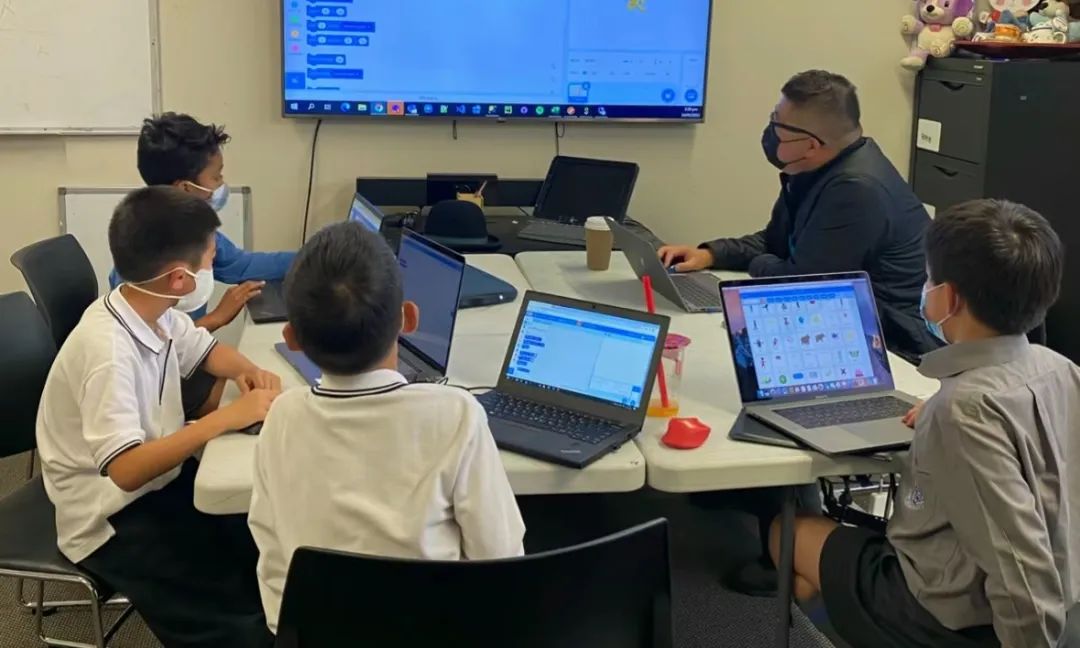For elementary school students, learning programming not only cultivates their logical thinking and creativity but also lays a solid foundation for their future learning and career development. However, faced with a dazzling array of programming languages, parents often feel confused: What programming languages are suitable for elementary school students? This article will reveal the secrets and take you on a journey of discovery.

1. Scratch: The Best Choice for Introductory Visual Programming
Scratch is a graphical programming language developed by the Massachusetts Institute of Technology, designed specifically for children aged 8 and above. It uses a drag-and-drop programming method, allowing students to build programs with block-like code without needing to memorize complex programming syntax.
To answer the question: What programming languages are suitable for elementary school students? Scratch has a rich library of resources and interactive features, enabling children to create animations, stories, games, and more, thus learning the basic concepts and logic of programming through practice. More importantly, Scratch has a large community where children can share their creations and exchange learning experiences with other programming enthusiasts, stimulating their interest and creativity.
Recently, I spent several months guiding my child through several mainstream children’s programming courses available on the market: some introduced concepts through animations, making it relatively easy for children to start, but after delving deeper into the courses, they felt they were “spending money on programming to learn general knowledge”; others had a wide range of difficulty and depth, with rich content, but after 8 or 9 sessions, the child found it too challenging and lost interest….
Compared to offline institutions, online learning has its advantages. Programming teaching is inherently screen-based, making it naturally suitable for online formats. Moreover, online courses typically feature the most outstanding teachers, and the courses have been repeatedly refined and optimized. Additionally, online course prices are generally cheaper than offline institutions, offering better value for money.
In the end, we enrolled in the Scratch course offered by Gaotu Programming Report, where Teacher Mumu and Teacher Chengzi were truly excellent. Their professional knowledge is deep and broad, integrating various interdisciplinary knowledge vividly, and they can guide children and stimulate their interest, which I think is crucial, as children at this age find it difficult to continue learning without interest! I believe parents can give it a try without fear of making a mistake!
❤️Follow me and click to send a message to receive a limited-time free trial class from Gaotu Programming.Additionally, there are free gifts including 【Creative Programming Works】【Interactive Live Programming Classes】【5 Major Programming Creation Gifts】~~
❤️Limited spots available, only the first 10 each day, so act fast!
By the way, don’t forget to download the Gaotu app, where you can see all the courses and teachers, with many prices clearly marked, so you can have a clear idea of what’s suitable for you!
Moreover, the Gaotu app has a great learning section, including question banks, materials, experience sharing, mini-games, tools, etc. It’s very comprehensive. Regularly practicing questions and using these learning tools will enhance your skills faster. Go, go, go!
2. Python: The Ideal Choice for General Programming Language Introduction
Python is a simple yet powerful programming language widely used in data analysis, artificial intelligence, web development, and more. Although Python’s syntax is relatively complex, it remains a good choice for elementary students with some programming background.
Python’s syntax is clear and straightforward, resembling natural language, making it easy to understand and remember. Additionally, Python has a rich set of libraries and frameworks, allowing children to complete various interesting programming projects, such as creating simple games, drawing graphics, and processing data. Through learning Python, children can gradually master core programming concepts and thinking patterns, laying the groundwork for learning more advanced programming languages later.
3. JavaScript: The Introductory Language for Web Programming
JavaScript is a programming language used for web development, running in browsers to control the content and behavior of web pages. For elementary students interested in web development, learning JavaScript is a good choice.
By learning JavaScript, children can understand how web pages work, learn how to create and manipulate web elements, and achieve dynamic effects on web pages. Additionally, they can use JavaScript to create simple web games or interactive applications, thus practicing their programming skills and innovative thinking.
4. Blockly: Another Graphical Programming Tool
Blockly is a graphical programming tool developed by Google, similar to Scratch, using a drag-and-drop programming method. However, Blockly focuses more on educational purposes, providing a richer set of programming blocks and more flexible combinations.
Blockly supports the conversion of multiple programming languages, allowing children to learn the syntax and logic of different programming languages. Additionally, Blockly can be combined with hardware platforms like Arduino, enabling children to control hardware devices through programming and realize more creative projects.
5. Choosing the Right Programming Language for Your Child
When selecting a programming language suitable for elementary school students, we need to consider the child’s age, interests, and learning background. For beginners, Scratch and Blockly are great choices, as they lower the barriers to programming through graphical methods, allowing children to get started easily.
For children with some programming background, Python and JavaScript are more suitable. They are not only powerful but also widely applicable, allowing children to practice their programming skills and innovative thinking.
Furthermore, we should pay attention to the community support and educational resources of programming languages. An active community and rich educational resources can provide children with more learning opportunities and interactive platforms, stimulating their interest and motivation to learn.
Regarding what programming languages are suitable for elementary school students, I have detailed it for everyone. The choice of programming language for elementary students is a key step in starting their coding journey. By understanding the characteristics and application fields of different programming languages, we can choose the most suitable programming language and learning path for our children. Let us work together to support our children’s future and let them soar freely in the world of programming!